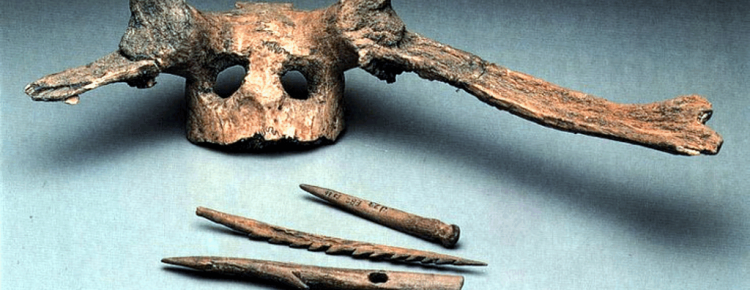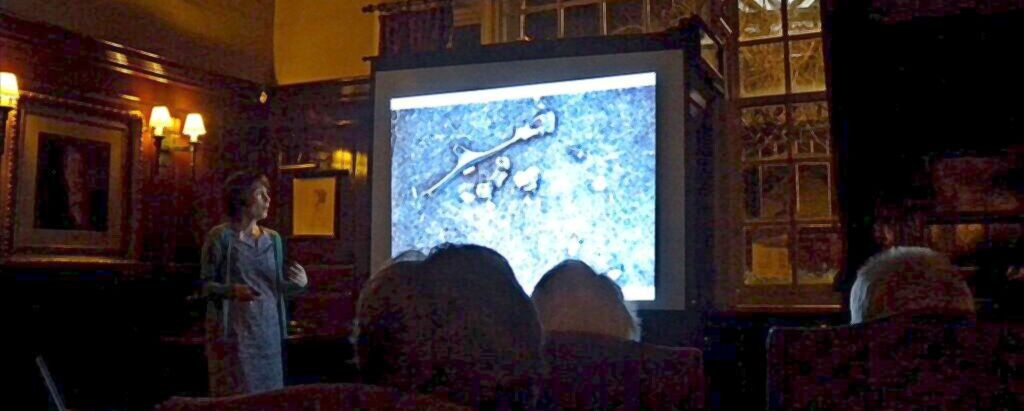Dr. Chantal Conneller gave a fascinating lecture at the Old Boar’s Head P.H. on Thursday evening (26th March 2015), organised by Middleton Archaeological Society. Dr. Conneller is Senior Lecturer in Archaeology at the University of Manchester but also expert in flint technology and refitting co-director at Starr Carr, the Mesolithic archaeological site near Scarborough, North Yorkshire.
Starr Carr rose to international prominance in the 1950s when it was excavated by Sir John Clark between 1949 and 1951. He famously uncovered large numbers of Mesolithic barbed points made from the antlers of red deer stags and 21 iconic antler frontlets with two ‘eye’ holes. These have been interpreted as hunting masks or ritualistic headgear and immediately bring these distant people to life in the imagination.
Apart from a small excavation in the 1980s, not much has been done since Clark’s time until the current excavations which started in 2004. These Dr. Conneller described in some detail, using trench and finds photographs. The excavation, still ongoing, has been a success and contextual and life-style data now fill the many ‘knowledge-gaps’. In its day, Starr Carr had been a busy mixed use site for hunter-gatherers on the edge of a lake. People came and went for between 200 and 500 years just after the last Ice Age.
The most spectacular find was Britain’s oldest house dating to 8,500 years BC. It predates the house previously thought to be the oldest, at Howick, Northumberland, by at least 500 years. Also uncovered was an 11,000-year-old tree trunk and a large wooden platform made of timbers which had been split and hewn. It is thought to be the earliest evidence of carpentry in Europe.
However, the archaeology is a race against time. The peat is drying out due to drainage and the archaeological material will gradually begin to decay. This current excavation is likely to be the last.



